Excursion to Fontainebleau and Vaux-le-Vicomte
(Français  )
)
From Vaux-le-Vicomte to Fontainebleau, come spend a day in two of France�s biggest and most beautiful palaces. Between tragedy for the one and international fame for the other, come visit these palaces that left their mark on France�s history!!!
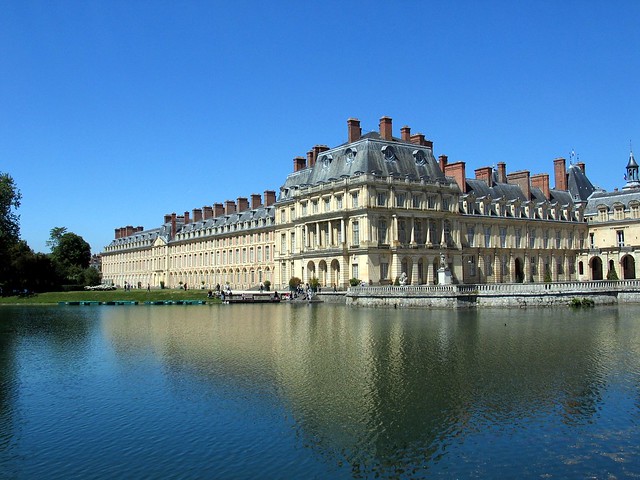 Source : Rina Sergeeva/Flickr |
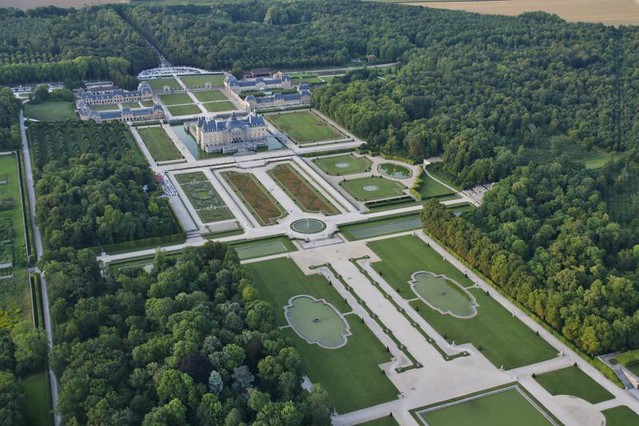 Source : Yves Jalabert/Flickr |
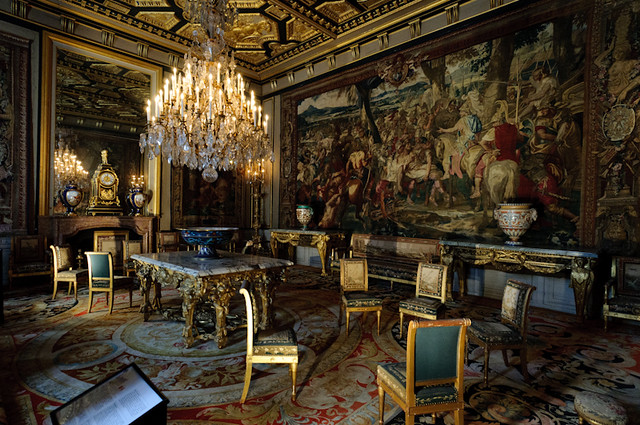 Source : Hervé/Flickr |
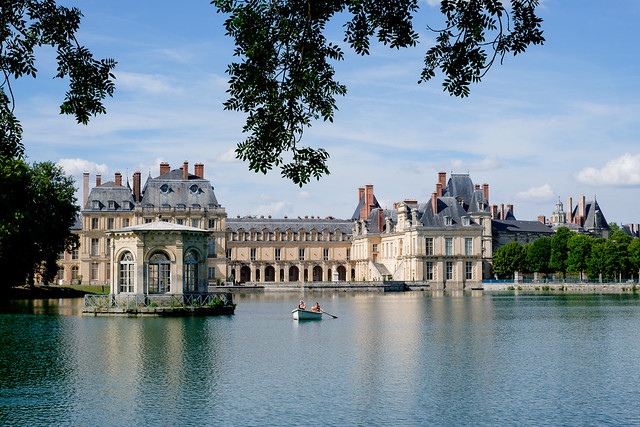 Source : Kenneth Lu/Flickr |
At the turn of the 17th century, just east of Paris, between the royal houses of Vincennes and Fontainebleau, a palace was erected between two streams. This noble fief is called Vaux-le-Vicomte. Come discover a palace that, due to its originality, inspired the greatest French lords.
Fontainebleau: a world-famous name, a magical name that brings to some images of a forest, to others a palace, a name that still glows from its royal history.
It absolutely must be seen!!

A revolutionary garden
Within this vast area, Le N�tre lays out his gardens� elements: trees, grottoes, lawn, still and moving water. This design expresses the order, control and nobility of this period. Even if the garden at Vaux was the only one to exist, it would suffice to illustrate the principles of garden design during the Great Century, due to its architectural uniqueness.
The palace dominates the vastness of the greenery, no matter what the viewpoint. Due to Le N�tre�s skill, the garden gives the pleasant impression of being taken in by the first glance, but this impression is only a formidable illusion.
In 1641 Nicolas Fouquet, a young parliament minister of 26 years, bought this lordship. Fifteen years later a unique masterpiece would be born here: one of France�s most beautiful palaces and gardens.
This project is the creation of three men�s genius, chosen by Fouquet: the architect Le Vau, the painter-decorator Le Brun and the landscaper Le N�tre. The sophistication and culture of their patron, Fouquet, inspired their talent.
However, the uniqueness of this palace also attracted the wrath of the most important lords, beginning with the King at the time, Louis XIV who, envious of this jewel and Fouquet�s success, would destroy this young minister.

Source: Guillaume Speurt/Flickr
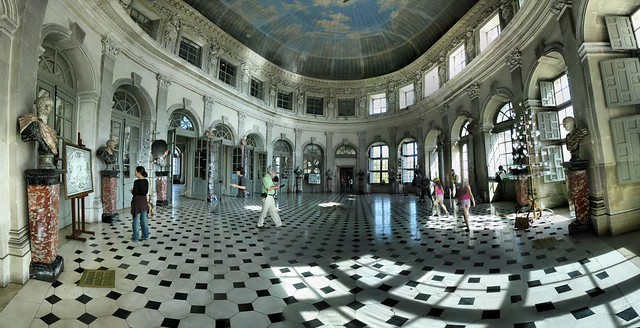
Le hall
Source : Panoramast/Flickr
Breathtaking rooms
The lobby, which is composed of a single room, is an important innovation. The whole space serves as a central point surrounded by 2 separate sections each having a staircase.
On the garden side of the ground floor are two suites, one reserved for the King, the other for Nicolas Fouquet.
The other ground floor rooms on the courtyard side are, in 1661, meant to supplement the suites on the garden side. A dining room is located there, an innovation which appeared during the mid-17th century in France and inspired many other palaces.
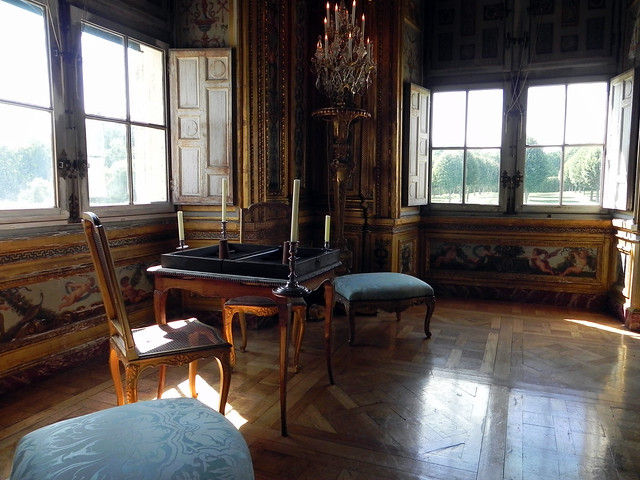
La salle de jeux
Source : busylvain/Flickr
Vaux-le-Vicomte was the stage to one of the 17th century�s most spectacular parties, filled with refinement, beauty, magnificence, but also drama. The King wanted this to more easily trick Fouquet, whose death he secretly wished. Fouquet is dizzy with delight to put Vaux-le-Vicomte at the ruler�s feet, who he had always served faithfully.
This party, which had never been matched, was the model for future royal parties, and was apparently Minister Fouquet�s crowning moment. Only the King knew that Fouquet was a few hours from his end. For Louis XIV, the crowd�s applause meant for someone other than himself, this home more luxurious than his old palaces, this magical garden, were all bitter blows to his ego and increased his desire to destroy this minister.


Source :Kenneth Lu/Flickr
Fontainebleau Palace
Deserving the title of �House of the centuries, true home of kings� bestowed on it by Napoleon I, Fontainbleau Palace exposes us to more than 700 years of French leaders, from the Louis VII�s coronation in 1137 to the fall of the Second French Empire in 1870!!
No other royal palace in France can boast of having welcomed 34 rulers. Every French ruler has come to Fontainbleau. Fall was the most popular season for hunting and a common meeting time for the Court. That�s why this property can be considered their family home.
Garden of the Rulers
The Fontainebleau park covers 115 hectares. Henri IV had the Grand Canal excavated between 1606 and 1609. It is 1.2 km long. It was possible to travel by boat on it, and Louis XIII had a boat sailing on it. During the 17th century, landscaper Andr� le N�tre added a parterre to it.
The Garden of Diana or �Queen�s Garden�
Until the time of Louis Philippe I, it was completely enclosed by an orange grove commissioned by Henri IV. At the garden�s center is the Fountain of Diana (1602), crowned by a statue of the goddess of the hunt, and surrounded by four bronze dogs returned from the Louvre where they had been moved.
The English Garden
Formally called the �Pine Garden�, this garden redesigned in the 19th century English style, whose main layout was created during the reign of Napoleon I, is divided by an artificial river. At the far end, a pool marks the location of the legendary �Fontaine-Belle-Eau�.


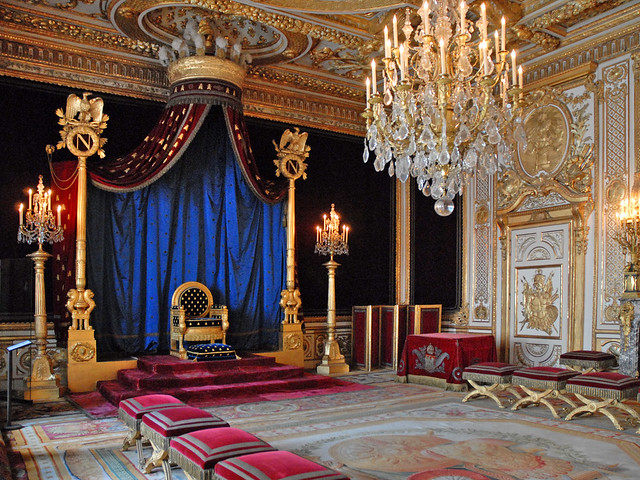
Source : Jean-Pierre Dalbéra/Flickr
The Fontainebleau Palace�s King�s Chamber: the throne
Used as the King�s bedroom since the late 16th century, this room was the most important one in the palace. Before the French Revolution, the King�s Chamber and bed was a symbol of the ruler�s power. Converted into the Throne Room by Napoleon in 1808, the room regained this function. As in the Empress�s bedroom, the decor is a mixture of many periods.
The ceiling�s central section, which is the oldest, dates from the mid-17th century, and the section above the throne from the end of the Sun King�s reign. Certain traditional elements were used at the time of Louis XV, such as the two doors on each side of the fireplace, and newer ones were later added, such as the large woodwork panels.
In 1837, a portrait of Louis XIII was placed above the fireplace in honor of the one that had been there during the �Ancien R�gime�, and burned during the French Revolution.
!
Simply magnificent!
It�s about 60 meters long. King Francis I had it decorated: he kept the keys with him for his VIP guests to visit it. The Gallery was commissioned to the Italian Rosso Fiorentino who decorated it in a unique style. The King�s monogram can been seen everywhere. Paintings symbolize stories from Greco-Roman mythology. One of the most famous is the Royal Elephant (symbol of strength and insight) which carries the Royal Number.
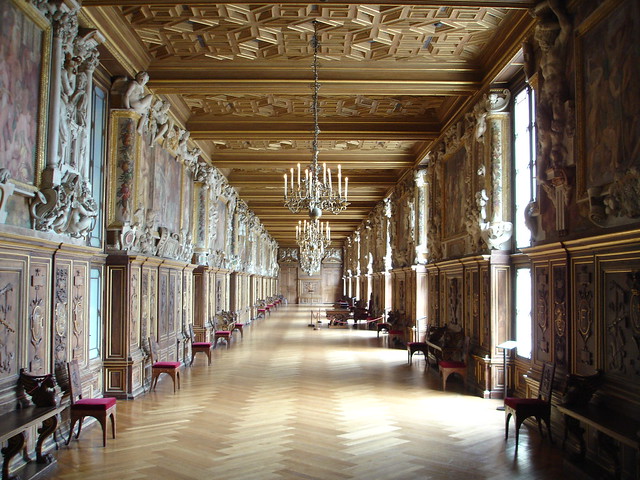
Source : Neil Rickards/Flickr
-
Meeting at 8:00 am on the stairs of the Op�ra Garnier (metro Op�ra, lines 3-7-8 and RER A, station Aubert)
-
Departure for Fontainebleau
-
Guided tour (in French) of Fontainebleau castle
-
Promenade in the park and at the great lawn; visit of the Diane�s and the English gardens.
-
Time for a lunch in the city center or picnic in the garden of Fontainebleau castle.
- à 14h00 départ pour de Vaux le Vicomte
-
Departure for Vaux-le-Vicomte and its beautiful gardens at 2:00 pm
-
Guided visit (in French) of the drawing room, private offices, the dining room, bedroom and apartments of the first floor, kitchens and caves at the cellar).
-
Self guided visit of the horse and carriage museum (rare collection of period cars and carriages)
-
Arrival to Paris expected around 7:00-7:30 pm.
Day's program : |
For more information : : Contact CIJP |
Price : full payment before the*
are included :
- Transport by coach
- Entrance to Fontainebleau Palace and its gardens
- Guided visit (in French) of Fontainebleau Palace
- Entrance to Vaux le Vicomte Palace and its gardens
- Guided visit (in French) of Vaux le Vicomte Palace
- Entrance to the carriage museum in Vaux le Vicomte (rare collection of period cars and carriage
Optional extra for lunch at the restaurant : 18,00 €
*An extra 5 € will be added to the price for all reservations after this date
Click here to see the terms of participation
*Definitive reservation only on full payment.